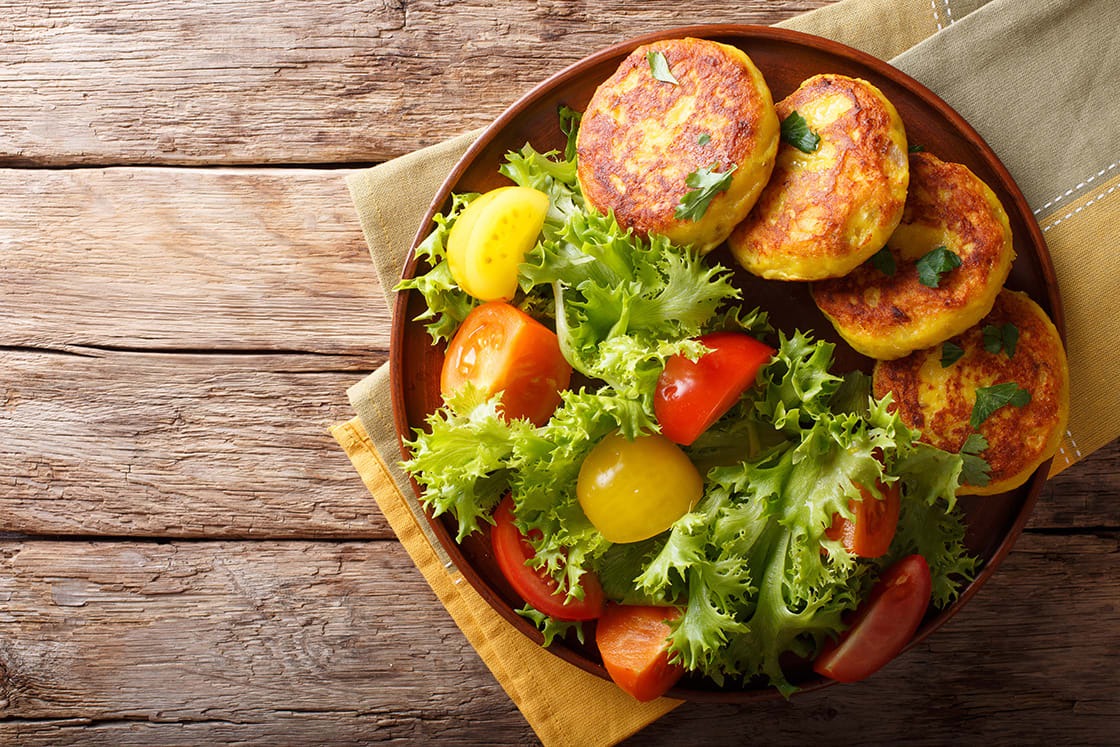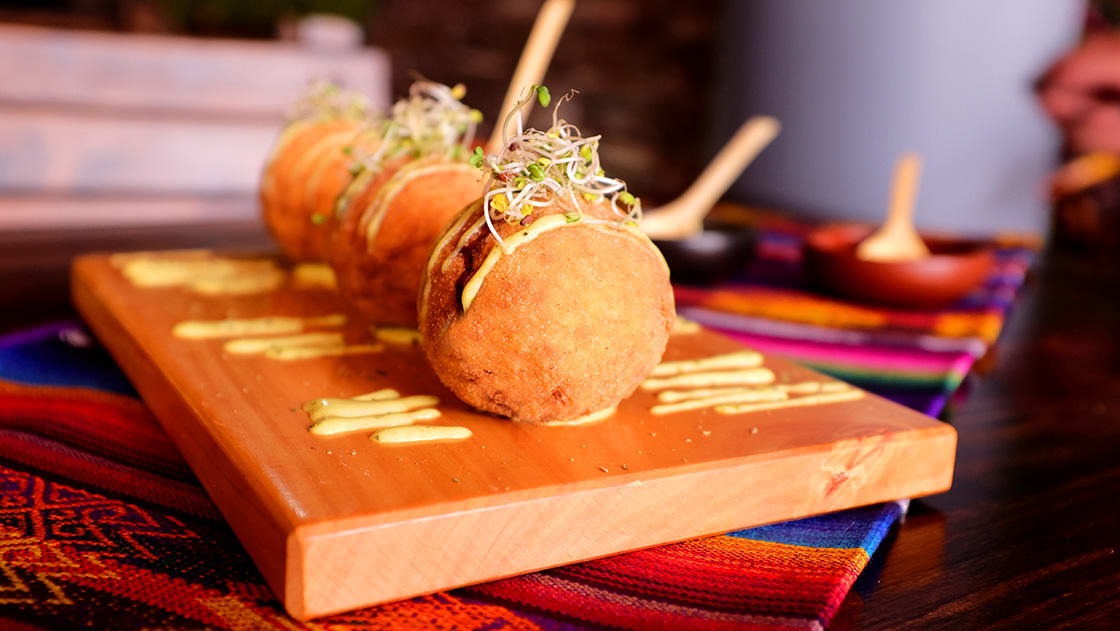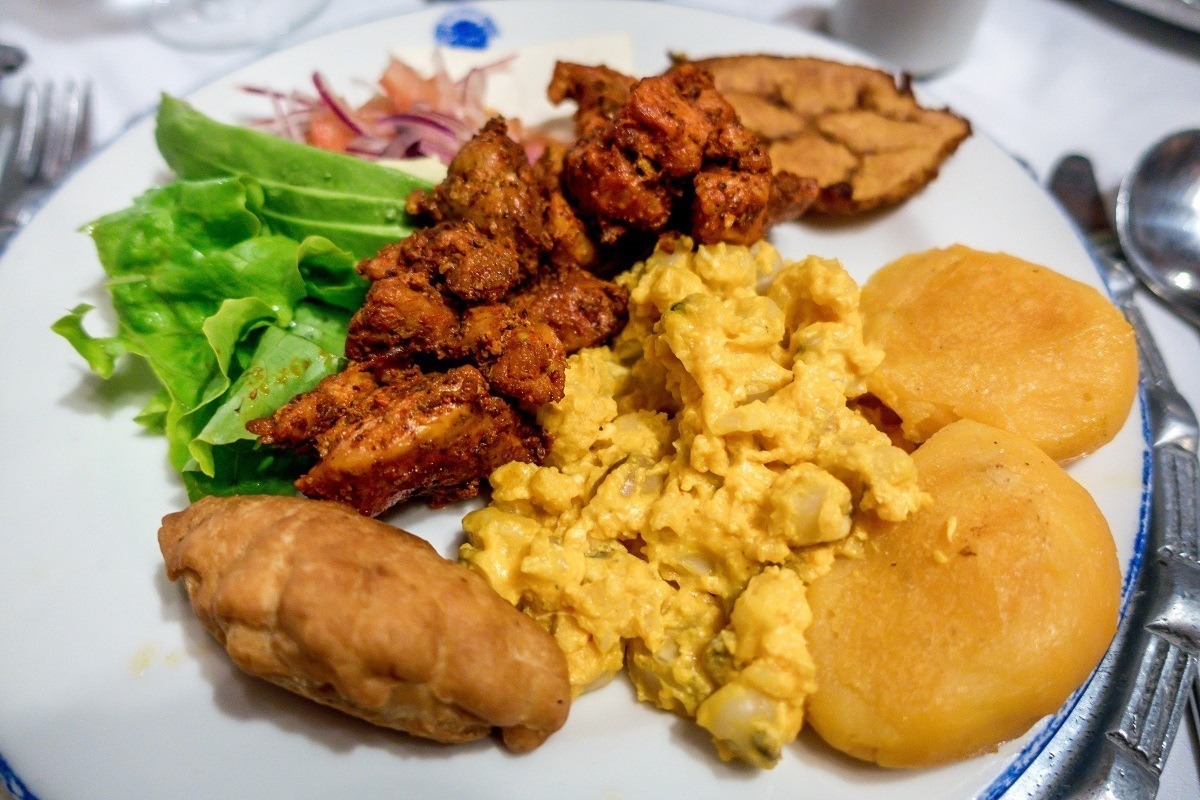We didn’t know how passionate Ecuadorians were about their food until we traveled around the country for two weeks to taste various Ecuadorian dishes from different regions. Ecuadorian cuisine combines history and combines indigenous and colonial cooking techniques and dishes. You can taste traditional dishes rooted in the Amazon, Spanish colonial dishes in Quito and Andean dishes in the surrounding mountains. While the Ecuadorian coast is known for its seafood dishes, the interior offers hearty grilled meats and river fish.
The layout and history of the country lead to an extremely exciting modern cuisine with many traditional Ecuadorian dishes to try. Of all the countries in South America, Ecuador is one of our favorites in terms of cuisine.
Traditional Ecuadorian cuisine
It is difficult to determine a single national dish in Ecuador. There are the famous fried guinea pigs, fried Bolon de Verde and grilled Pincho meat. In this guide we will introduce you to the most traditional foods that you must try in Ecuador. Whether you want a hearty soup or a Pan of yuca, we will find a traditional Ecuadorian dish for you.
1. Fanesca

Fanesca is a rich and hearty soup deeply rooted in Ecuadorian culture and tradition. It is especially associated with the Easter season. This Ecuadorian dish symbolizes the fusion of indigenous and Spanish influences.
The ingredients reflect the biodiversity of the country and contain 12 different types of beans and cereals, such as lentils, peas, corn and broad beans, each representing one of the apostles. The Bacalao (cod) takes center stage, the milk and pumpkin are thickened to a creamy consistency. It is both nutritious and complex in taste.
It is commonly consumed throughout Ecuador during Holy Week, but visitors can order it in Restaurants throughout Ecuador, especially in Quito. I actually had this dish in Quito at the San Augustin Restaurant and I found it very complex and rich in taste. There is definitely a lot going on in this soup, and you should have a good appetite before ordering it.
Fanesca is often topped with boiled eggs, fried plantains, cheese and sometimes Empanadas (like mine) that add layers of texture and richness.
2. Llapingachos

Llapingachos are a traditional Ecuadorian dish known for its delicious flavor and texture. These fried potato pies are a staple in the country’s cuisine. They are basically potato pancakes made with a mixture of mashed potatoes and cheese, seasoned with a touch of annatto for color and flavor.
Once formed into patties, they are fried in the pan until golden brown and crispy on the outside, while remaining soft and sticky on the inside. Llapingachos are commonly appreciated throughout Ecuador, especially in the Andean regions.
They are usually served as a side dish, but can easily be the center of a meal. The side dishes for Llapingachos vary, but they are often served with a side of avocado, Aji (a spicy Ecuadorian sauce) and Curtido (a type of pickled onion salad).
3. Guatitas

Guatita means “little belly” in English, and this dish consists mainly of beef tripe, a piece of meat from the stomach. It is an absolute staple in Ecuadorian cuisine, and the beef is cooked in a delicious peanut sauce and served creamy with boiled potatoes. The rich peanut sauce is seasoned with cumin, garlic and coriander, a Spicy body for the slightly rubbery tripe flesh. For an extra kick, picked onions are sometimes served. It is easy to understand why Guatita has such a reputation. Some even claim that Guatita is the ultimate hangover cure – we’ll let you be the judge of that.
4. Ceviche
Ceviche is a well-known dish, and you’ve probably already heard about this popular fish dish. It is said to be native to Peru, but many countries have their own adaptations. Ecuadorian Ceviche really draws its influences from the Incas and Spanish colonialism around the Ecuadorian and Peruvian borders. Given the proximity of Peru and Ecuador, it is also not surprising that the dish is equally popular in both countries.



